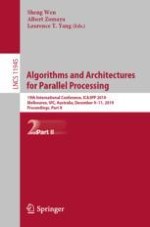2020 | OriginalPaper | Buchkapitel
A New Bitcoin Address Association Method Using a Two-Level Learner Model
verfasst von : Tengyu Liu, Jingguo Ge, Yulei Wu, Bowei Dai, Liangxiong Li, Zhongjiang Yao, Jifei Wen, Hongbin Shi
Erschienen in: Algorithms and Architectures for Parallel Processing
Aktivieren Sie unsere intelligente Suche, um passende Fachinhalte oder Patente zu finden.
Wählen Sie Textabschnitte aus um mit Künstlicher Intelligenz passenden Patente zu finden. powered by
Markieren Sie Textabschnitte, um KI-gestützt weitere passende Inhalte zu finden. powered by
